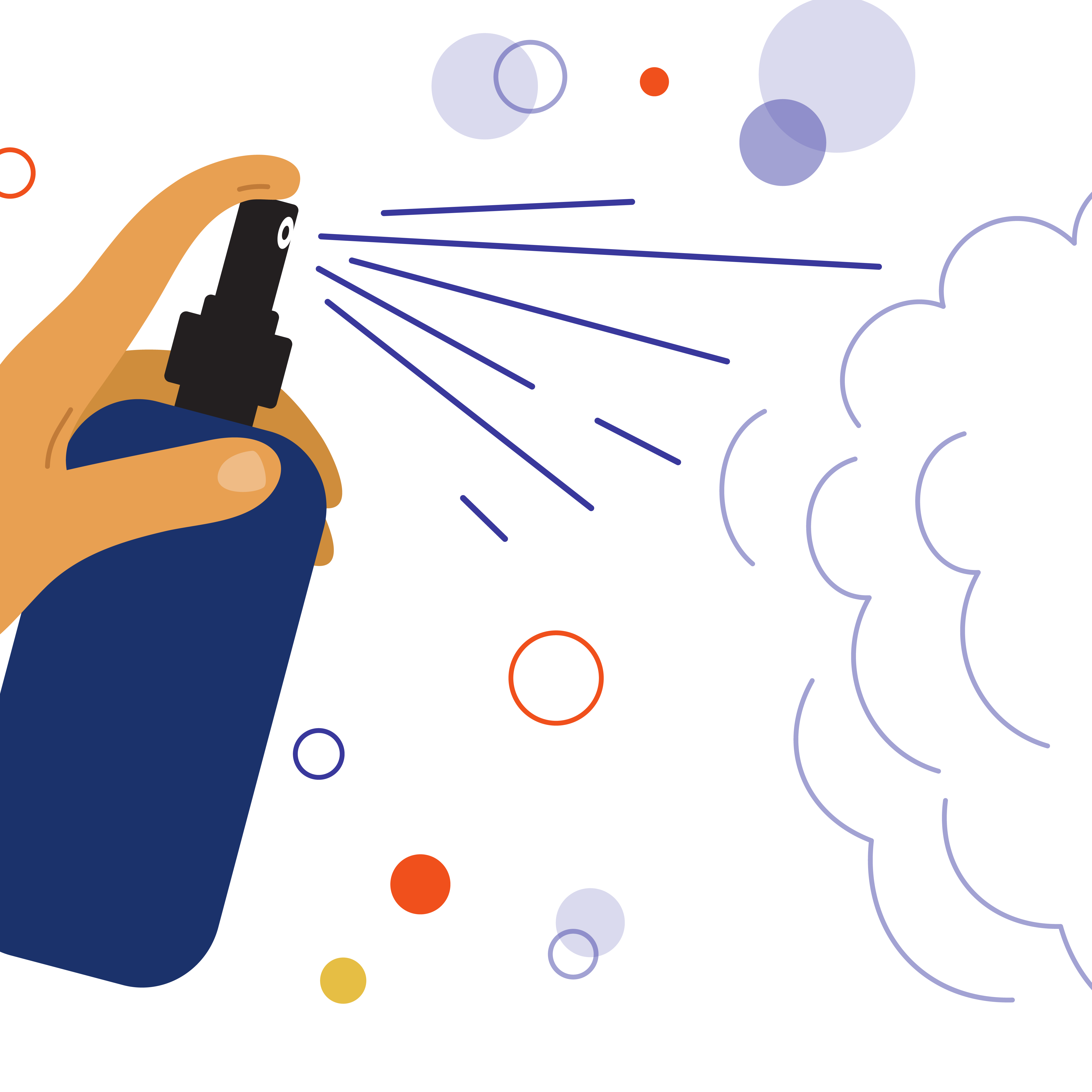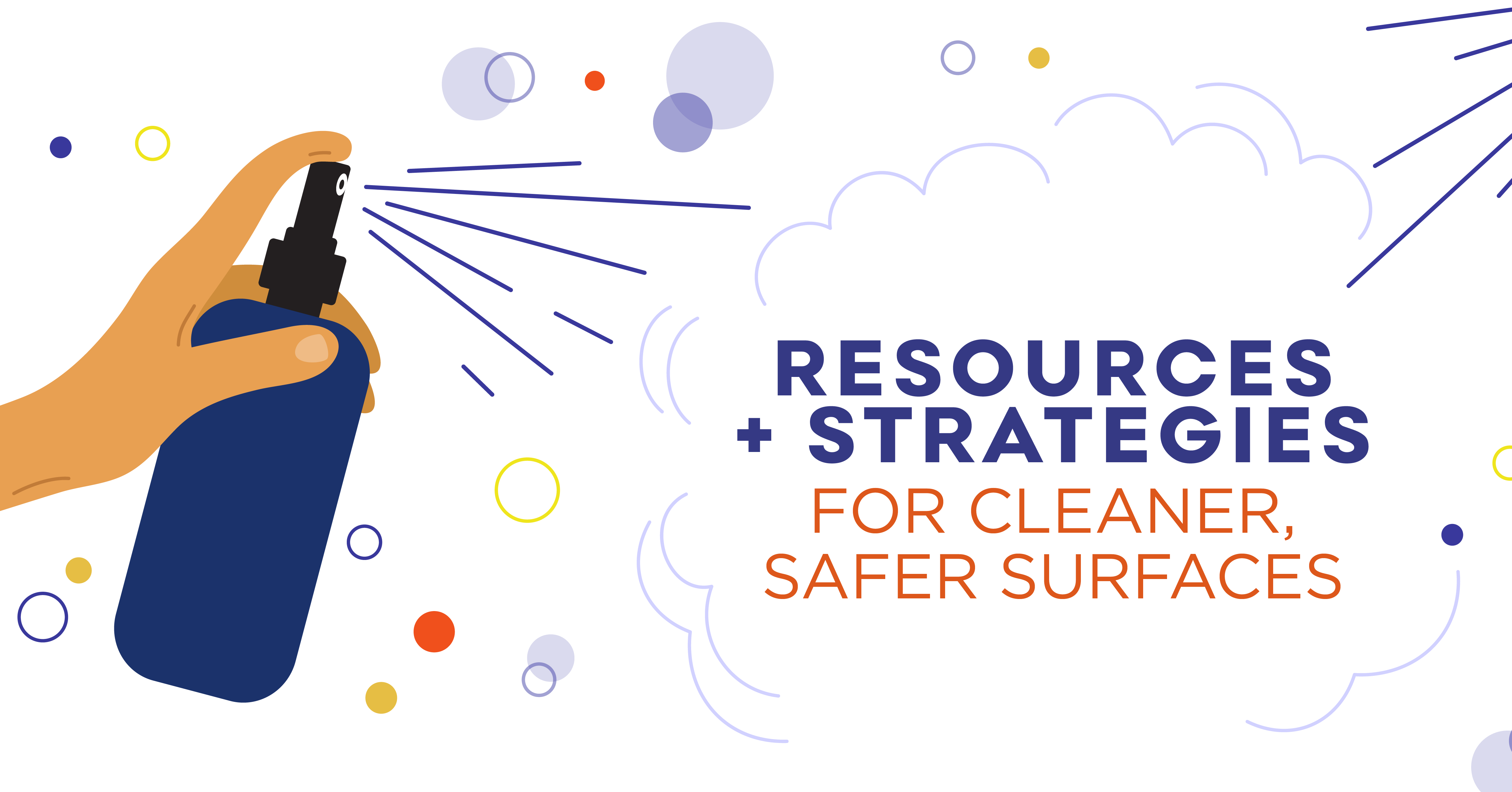 If you missed the first installment of this series, we shared spatial strategies for safe opening. Today, we are considering the steps we need to take make our surfaces and equipment safer for staff. We would like to share 3 great resources we have used to plan our approach to surfaces that speak to risk, methodology, frequency and chemicals.
If you missed the first installment of this series, we shared spatial strategies for safe opening. Today, we are considering the steps we need to take make our surfaces and equipment safer for staff. We would like to share 3 great resources we have used to plan our approach to surfaces that speak to risk, methodology, frequency and chemicals.
- How Long Can The Virus That Causes COVID-10 Live On Surfaces? – Common sense advice based on scientific research from Johns Hopkins University. Key take away:“You are more likely to catch the infection through the air if you are next to someone infected than off of a surface. … However, there cannot be an overabundance of caution. Nothing like this has ever happened before.”
- Cleaning and Disinfection of Households – CDC guidelines that differentiate between hard (non-porous) surfaces, soft (porous) surfaces, electronics, linens, hands, food and trash. Cleaning and disinfection used in combination is a winning approach. Key take away:
“Cleaning …does not kill germs, but by removing them, it lowers their numbers and the risk of spreading infection.
Disinfecting …does not necessarily clean dirty surfaces or remove germs, but by killing germs on a surface after cleaning, it can further lower the risk of spreading infection.” - List N: Disinfectants for Use Against SARS-CoV-2 – EPA registration for products, active ingredients and contact time for effectiveness. Use this guide to check the efficacy of the disinfectants you may be considering. Key take away:
“.follow label directions for safe, effective use. Make sure to follow the contact time, which is the amount of time the surface should be visibly wet.”
MANUFACTURER’S LITERATURE
While we are focused on the most effective cleaning and disinfecting agents and protocols, we need to remember to consult manufacturer’s literature for cleaning recommendations for the specific materials and products found in the space. For example, products that include chlorine bleach, while a very effective disinfectant, can permanently damage metal surfaces such as stainless steel and copper.
POTENTIAL HEALTH CONSEQUENCES
We also need to consider the potential health consequences of exposure to some of the ingredients included in our cleaning toolkit. QACs (Quaternary Ammonium Compounds), among others, are commonly included in cleaning and disinfecting products and can trigger asthma symptoms, rashes and eye injury. Again, follow the directions on the label. Proper ventilation in a high rise can mean extended periods of un-occupied time to allow HVAC systems time to cycle fresh air.
We have been experimenting with air quality sensors which monitor CO2, particulates and chemicals with other measures. These sensors report “healthy” vs “risk” at the source. This gives occupants continuous feedback about air quality – more about that soon.
CLEANING BASED UPON FREQUENCY OF USE
We have identified 4 basic strategies for cleaning:
- Individuals clean surfaces and materials that they use via centrally located disinfectant stations; cleaned daily (blue in diagrams below)
- Individuals clean and sanitize hands before and after contact; routinely as needed (orange in diagrams below)
- Periodic cleaning by facilities staff; cleaning multiple times throughout the day/or periodic as needed depending upon the frequency of use of the surface or object
(green in diagrams below) - Janitorial/daily and weekly cleaning materials; professional cleaning on a regular basis (purple in diagrams below)
Our first line of defense is our well-informed staff, armed with the proper supplies, showing concern for their own safety as well as their teammate’s. Individuals will use shared resources after having washed their hands. They will use wipes and other cleaning supplies to clean objects in spaces after use. Our facilities staff will monitor use and will clean shared spaces and equipment regularly. Janitorial staff will clean the restrooms, a potentially high-risk space, frequently throughout the day. The firm will institute regular professional cleaning. To make the professional cleaning as effective as possible we are embarking on a big, social-distancing-required, pre-opening clean-up and archiving effort. Then, when we are back, we will end each week with a firm clean-up/tune-up.
Here are a few examples of common workspaces in our office and the color-coded strategies we are planning to keep surfaces and equipment safer:
BREAKROOM
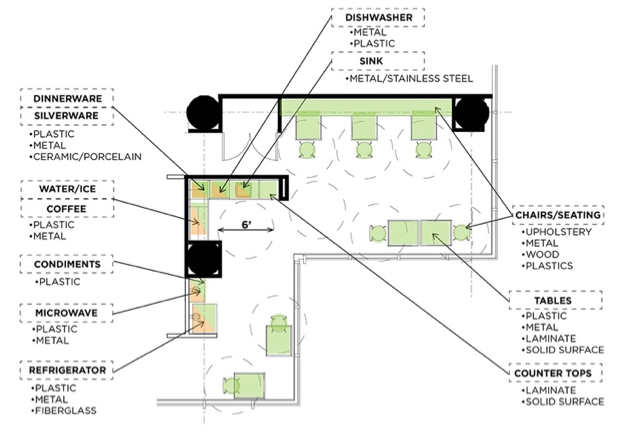
CONFERENCE ROOM
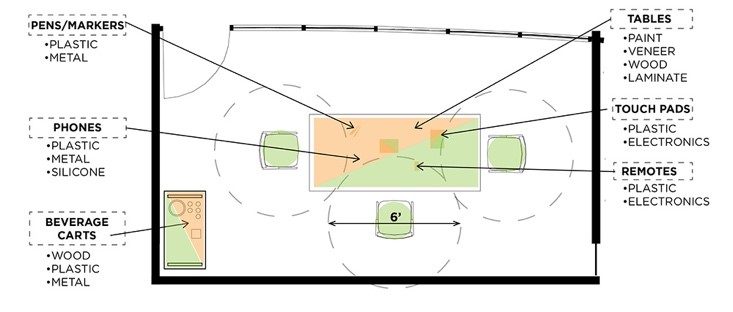
WORKSTATION

RESTROOM
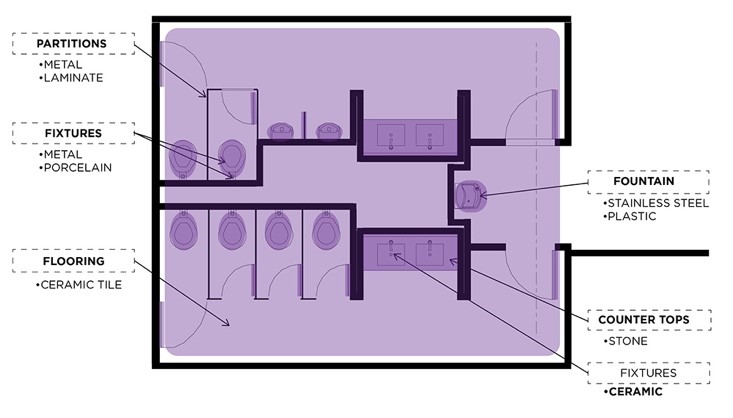
More than 90% of our staff participated in a workplace survey geared to reap the maximum benefit from the past 7 weeks of isolation. Sections included lessons learned from working at home, impacts to clients and our businesses and the changes we should make to our workplace now and in the future.
Next week we’ll share these survey results. Stay tuned for more updates to come. In the meantime, we’re here to help – if you have questions about your own workplace, reach out to Katie Dasgupta, associate principal of tvsdesign’s Workplace Studio.
